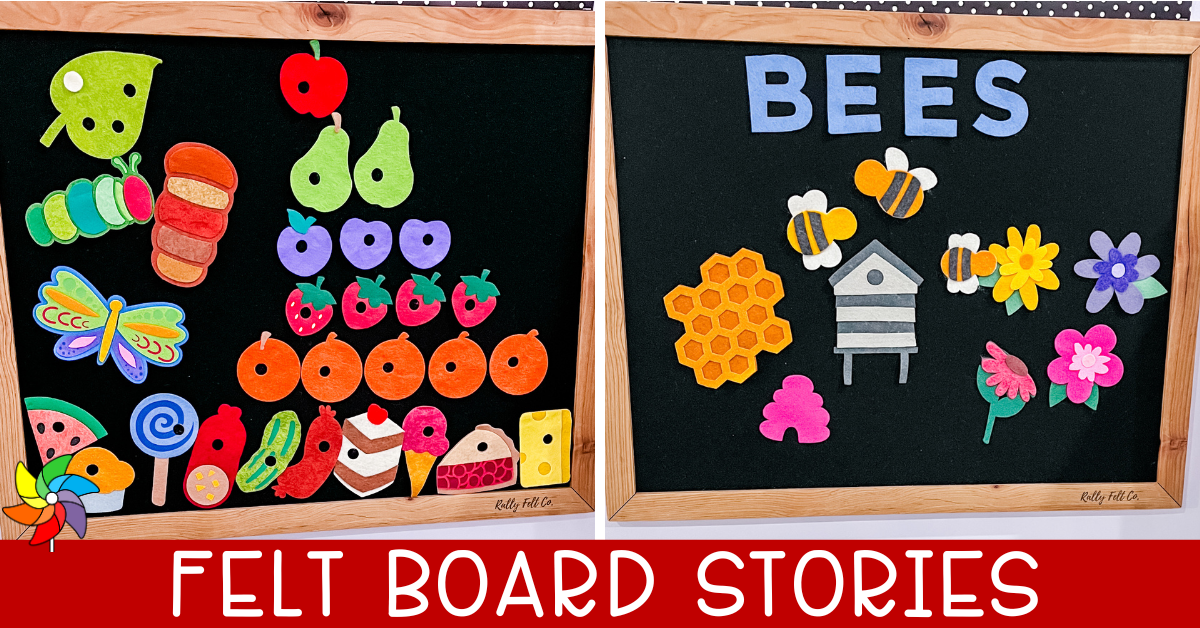
A felt board for preschool turns a simple story into a more interactive, hands on activity. It supports kindergartener readers share favorite books, comprehend the story, and puts early literacy skills to a new stage. Whether it is in circle time or in centers, felt board is a drawing where children are engaged in an active storytelling process.
Why Retelling Matters in Early Childhood

Re-telling a story allows children to own the story. They interact with the characters, recall how a things went first, then, and last; have a greater understanding of the novel
Also it’s good to add to vocabulary. Children are exposed to new vocabulary in context, we repeat key phrases and you learn the rhythm of language. As the days go by they contribute more information to the story and tell with such confidence.
Some children might even start using exact phrases from the book. Others will tell the story in their own creative way. Both are valuable.
Using the Felt Board for Preschool Story Retelling
Start with a book at the beginning of the week. As you read aloud, add the felt pieces to the board. This keeps students engaged and helps them follow the story.
Leave the felt pieces and the book out during center time. Students will naturally return to them. They like to retell the story on their own. They may use exact lines from the book or change the story slightly. Either way, they’re building language and comprehension.


What Children Practice While Retelling
There’s so much learning in this one simple activity:
- Naming the characters
- Remember what happened first, next, and last
- Using book language and repeating favorite lines
- Playing with rhyming words and rhythm
- Talking with friends, taking turns, and working together
Retelling also gives quiet students a chance to shine. Some will whisper the story. Others will act it out with excitement. Having the felt board and pieces allows each student to learn in their own way.
Where to Find Quality Felt Board Pieces
All of the felt pieces featured here come from two trusted sources: Rally Felt Co. and ArtFelt.net. Both offer beautifully crafted sets that are designed for classroom use. The pieces are durable, colorful, and thoughtfully designed to match each story. Rally Felt Co. even offers a monthly subscription with new book sets delivered throughout the year!
10 Favorite Books for the Felt Board
These books are perfect for story retelling in a preschool classroom. Each felt set, brings the books to life and enables students to practice essential early literacy skills.
The Very Hungry Caterpillar by Eric Carle.


Bee Dance by Rick Chrustowski
Explore how bees communicate through movement. The felt pieces include flowers, bees, and hive shapes, making it easy for children to act out the dance and practice sequencing.
Hello, Bugs! by Smriti Prasadam
This simple, rhyming text introduces different bugs and their movements. The felt pieces support vocabulary development as children match each bug to the action words in the story.


Not a Box by Antoinette Portis
Encourage creativity and imagination with this open-ended story. Students can use the felt boxes other pieces to transform a box into a rocket, robot, or anything else they can imagine.
Freight Train by Donald Crews
Teach colors and order with this classic book. Children can line up each colored train car in the correct sequence while retelling the rhythmic, repetitive text.


A Color of His Own by Leo Lionni
This gentle story about a chameleon teachers colors and self-acceptance. The felt pieces make it easy to retell as children match the chameleon to different backgrounds and scenes.


Growing Vegetable Soup by Lois Ehlert
Teach gardening vocabulary and sequencing with this colorful story. Students can plant, water, and harvest felt vegetables as they retell the process from seed to soup.


Get Started with a Felt Board in the Classroom Today!
A felt board for preschool opens the door to do many rich learning opportunities. Children become storytellers. They explore language. They play with books in a way that sticks.
Try starting with just one book and a simple set of pieces. Watch what happens. You’ll see confidence grow, language develop, and a love of stories come to life.
No felt board? No problem! Many of these activities are easily replicated on an interactive bulletin board as well! Just use the “pointy” side of Velcro dots to give the pieces something to stick to.
